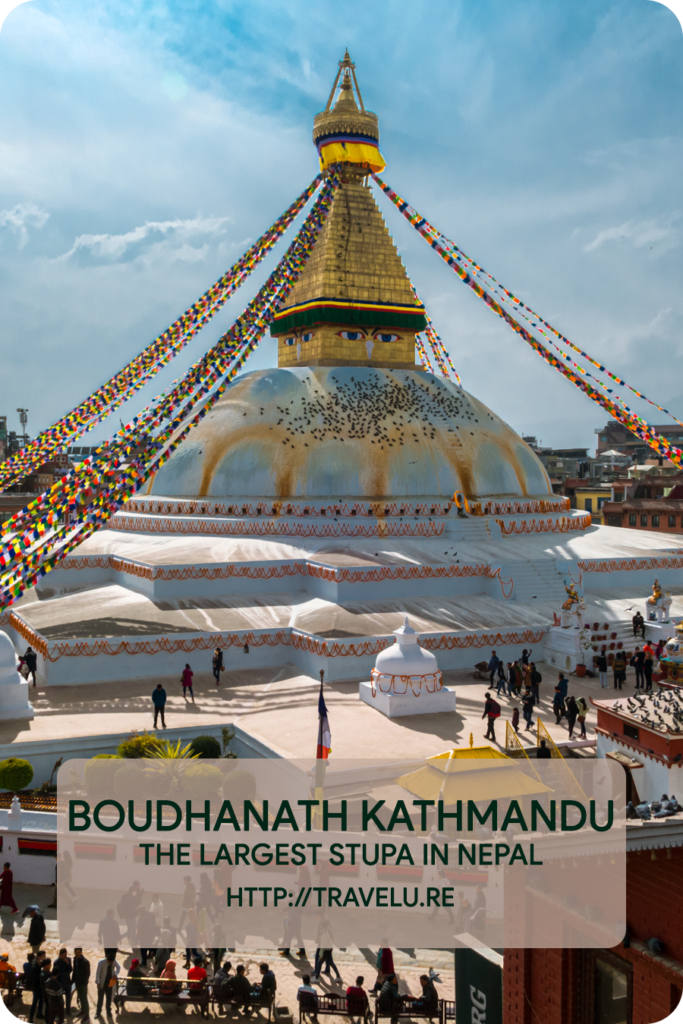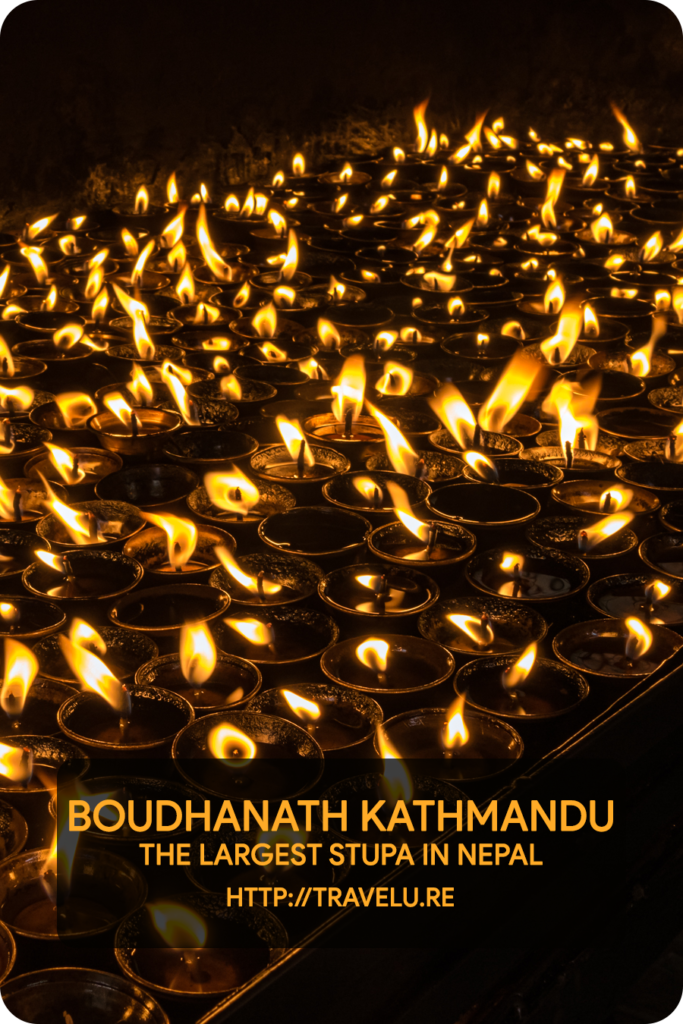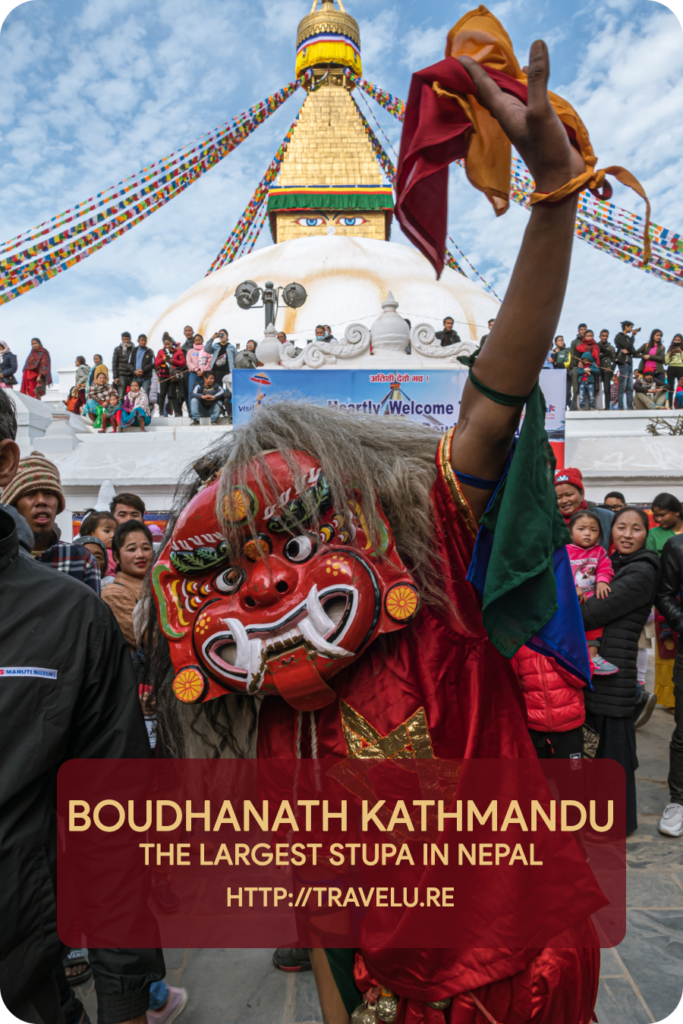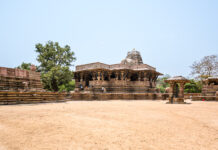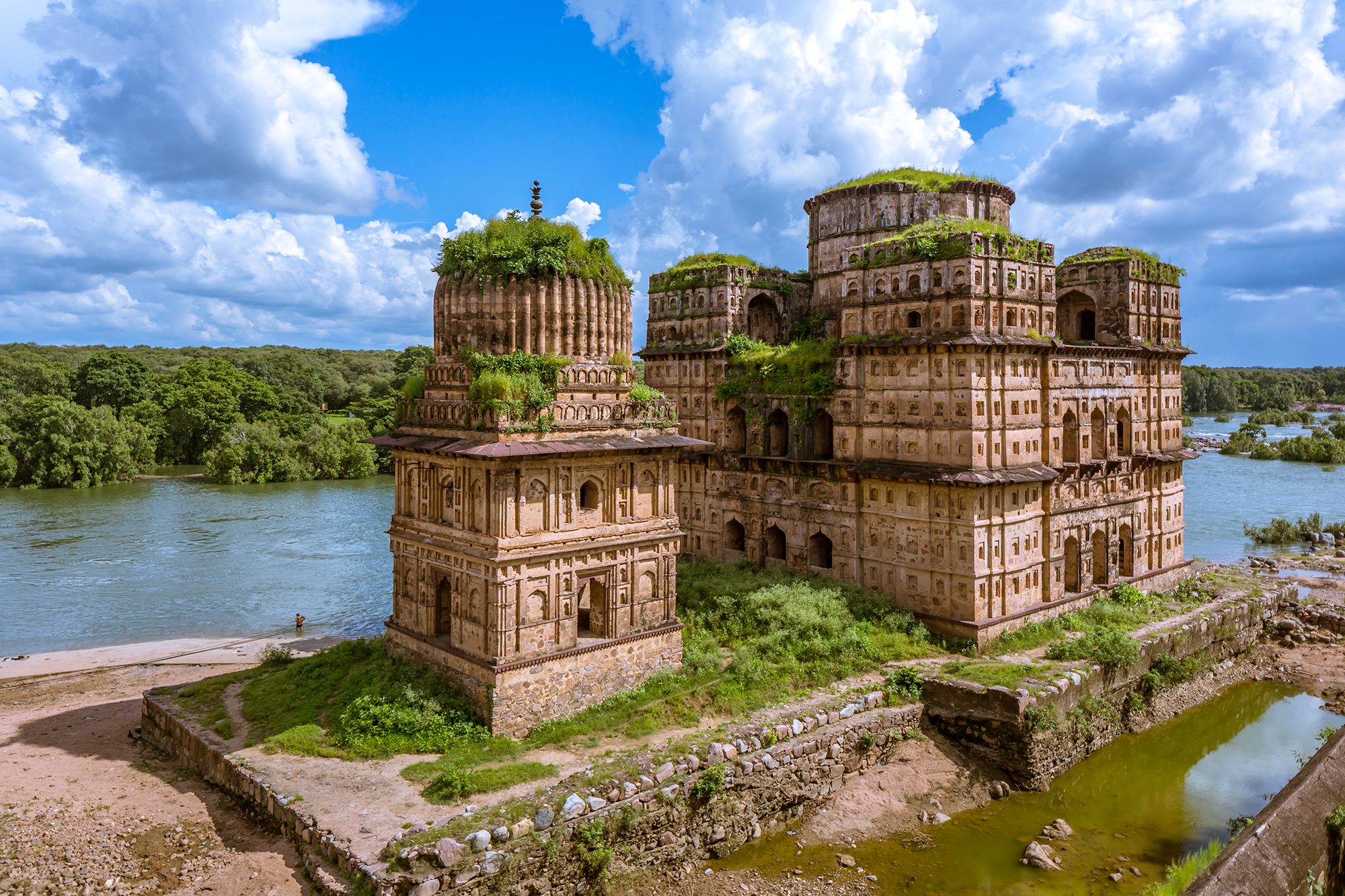Boudhanath Kathmandu – The Largest Stupa in Nepal
We jostled with the crowds in a narrow passage to reach Boudhanath Stupa, the largest Buddhist stupa in Nepal. It is a part of Kathmandu Valley, a joint UNESCO inscription spread over Kathmandu, Bhaktapur, and Patan. With a diameter of ~100 metres and a height of 36 metres, its first glimpse leaves you gaping open-mouthed with awe. Its gold-plated yasti (spire) glitters bright and makes your eyes blink.
The all-seeing eyes painted on the four sides on the base of the spire symbolise awareness, and their gaze follows you as you go around its perimeter soaking in the bustle and belief. The stupa is built in the shape of a Mandala to replicate the Gyantse of Tibet, with countless monasteries sprinkled around it. That makes Boudhanath the centre of Tibetan Buddhism in Nepal.
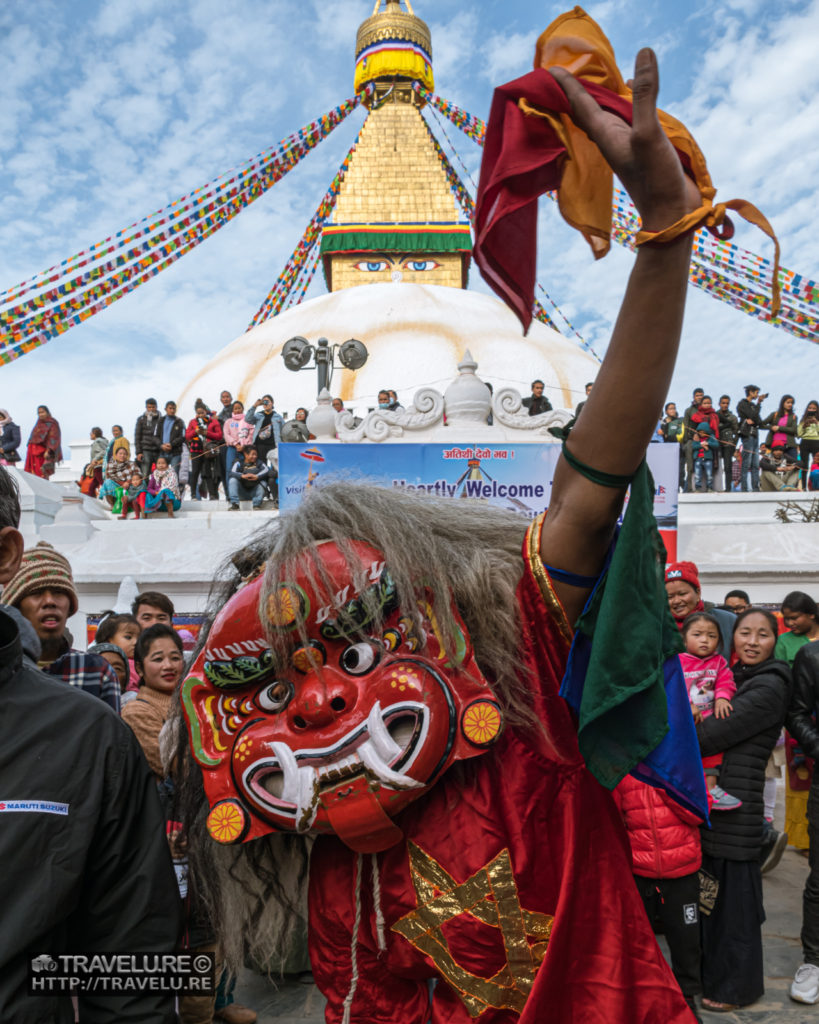
Boudhanath – Legend and History
King Manadeva in the 5th century CE or King Sivadeva in the 6th century CE built the original structure. Over the following centuries, elements buried it. A late 15th or early 16th-century excavation revealed a mound where they found the bones of the 7th century King Amshuverma.
Legend has it that while constructing a traditional stone drinking fountain (Dhunge Dhara) in the palace where Narayanhiti (residence of the king before the 2006 coup that is now a museum) stands today, they found no water. An astrologer recommended a human sacrifice of a male with battees lakshanas (thirty-two perfections). Only the king and his two sons fitted the bill. The king (Vikramaditya) nominated himself and ordered one of his sons to conduct the sacrifice.
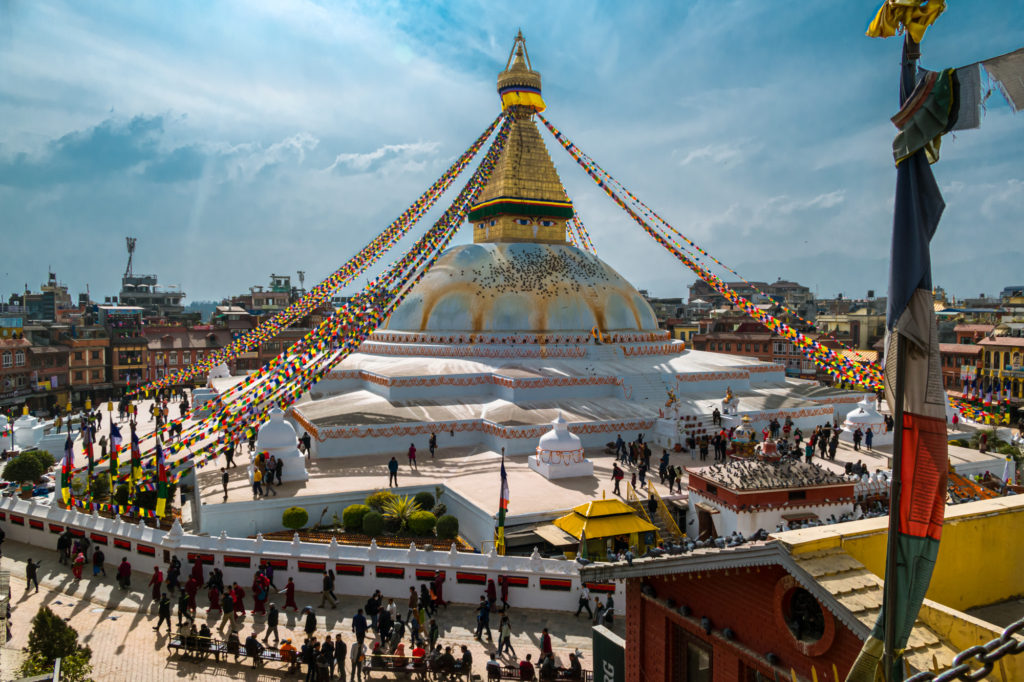
During the sacrifice, his head flew and landed where Sankhu Bajrayogini Temple stands today. Heavy-hearted, the son climbed atop Bajrayogini and cast off a chicken, determined to build a stupa where the chicken landed. Sure enough, that is where he built Boudhanath Stupa.
Boudhanath and 2015 Earthquake
The April-2015 earthquake that shook Nepal inflicted heavy damage to the stupa, cracking its spire. As a result, the authorities removed the structure above the dome and the relics it housed. They completed the task by October 2015. It took another year to reconstruct the spire. The private donations from Buddhist groups and volunteers bore the total cost of over $2.1 million and ~30kg of gold.
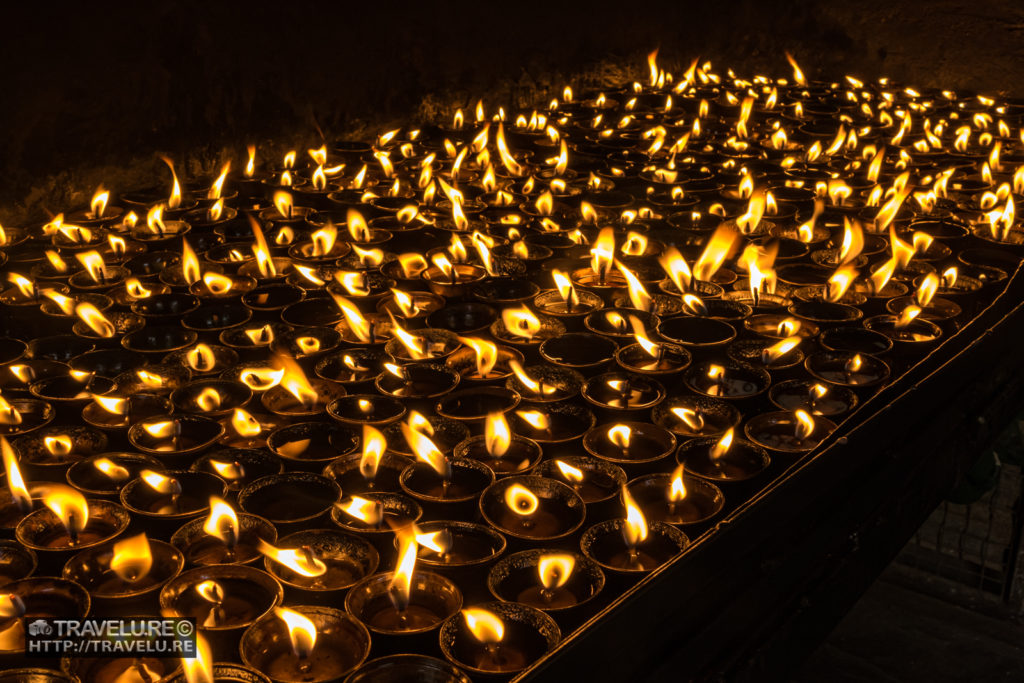
During my visit here on New Year Day of 2020, the stupa looked good as new. Circumambulating believers, devotees lighting butter lamps, and travellers hunting for souvenirs were back. The surrounding rooftop restaurants brimmed with coffee-or-beer-sipping onlookers taking in the glorious view. I found out from the locals that whether you take an early morning or evening stroll around the dome, Boudhanath is always full of life. As I spent a few hours there, I vouch for that claim. Next time you are in Kathmandu, visit Boudhanath. It guarantees to deliver contrasts ranging from peace to buzz, and more.
Pin these images full of life!
